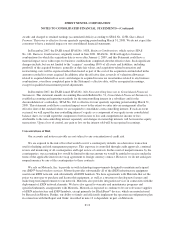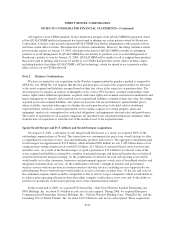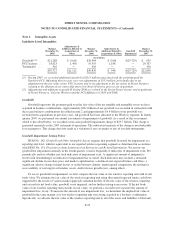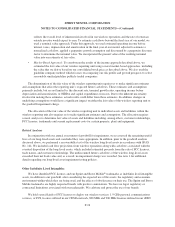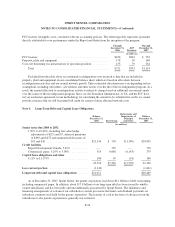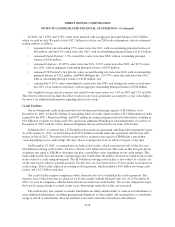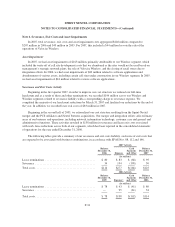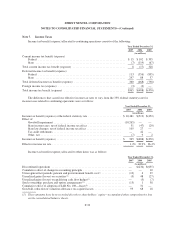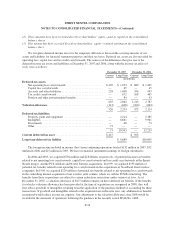Sprint - Nextel 2007 Annual Report Download - page 109
Download and view the complete annual report
Please find page 109 of the 2007 Sprint - Nextel annual report below. You can navigate through the pages in the report by either clicking on the pages listed below, or by using the keyword search tool below to find specific information within the annual report.SPRINT NEXTEL CORPORATION
NOTES TO CONSOLIDATED FINANCIAL STATEMENTS—(Continued)
reflects the overall level of inherent risk involved in our wireless operations and the rate of return an
outside investor would expect to earn. To estimate cash flows beyond the final year of our model, we
used a terminal value approach. Under this approach, we used estimated operating income before
interest, taxes, depreciation and amortization in the final year of our model, adjusted to estimate a
normalized cash flow, applied a perpetuity growth assumption and discounted by a perpetuity discount
factor to determine the terminal value. We incorporated the present value of the resulting terminal
value into our estimate of fair value.
•Market-Based Approach: To corroborate the results of the income approach described above, we
estimated the fair value of our wireless reporting unit using several market-based approaches, including
the value that we derive based on our consolidated stock price as described above. We also used the
guideline company method which focuses on comparing our risk profile and growth prospects to select
reasonably similar/guideline publicly traded companies.
The determination of the fair value of the wireless reporting unit requires us to make significant estimates
and assumptions that affect the reporting unit’s expected future cash flows. These estimates and assumptions
primarily include, but are not limited to, the discount rate, terminal growth rates, operating income before
depreciation and amortization, or OIBDA and capital expenditures forecasts. Due to the inherent uncertainty
involved in making these estimates, actual results could differ from those estimates. In addition, changes in
underlying assumptions would have a significant impact on either the fair value of the wireless reporting unit or
the goodwill impairment charge.
The allocation of the fair value of the wireless reporting unit to individual assets and liabilities within the
wireless reporting unit also requires us to make significant estimates and assumptions. The allocation requires
several analyses to determine fair value of assets and liabilities including, among others, customer relationships,
FCC licenses, trademarks and current replacement costs for certain property, plant and equipment.
Related Analyses
In conjunction with our annual assessment of goodwill for impairment, we re-assessed the remaining useful
lives of our long-lived assets and concluded they were appropriate. In addition, prior to the goodwill analysis
discussed above, we performed a recoverability test of the wireless long-lived assets in accordance with SFAS
No. 144. We included cash flow projections from wireless operations along with cash flows associated with the
eventual disposition of the long-lived assets, which included estimated proceeds from the sale of FCC licenses,
trade names, and customer relationships. The undiscounted future cash flows of the wireless long-lived assets
exceeded their net book value and, as a result, no impairment charge was recorded. See note 1 for additional
details regarding our long-lived asset impairment testing policies.
Other Indefinite Lived Intangibles
We have identified FCC licenses and our Sprint and Boost Mobile®trademarks as indefinite lived intangible
assets, in addition to our goodwill, after considering the expected use of the assets, the regulatory and economic
environment within which they are being used, and the effects of obsolescence on their use. The Sprint and Boost
Mobile trademarks are highly respected brands with positive connotations. We have no legal, regulatory or
contractual limitations associated with our trademarks. We cultivate and protect the use of our brands.
We hold several kinds of FCC licenses to deploy our wireless services: 1.9 GHz personal communications
services, or PCS, licenses utilized in our CDMA network, 800 MHz and 900 MHz licenses utilized in our iDEN
F-24







